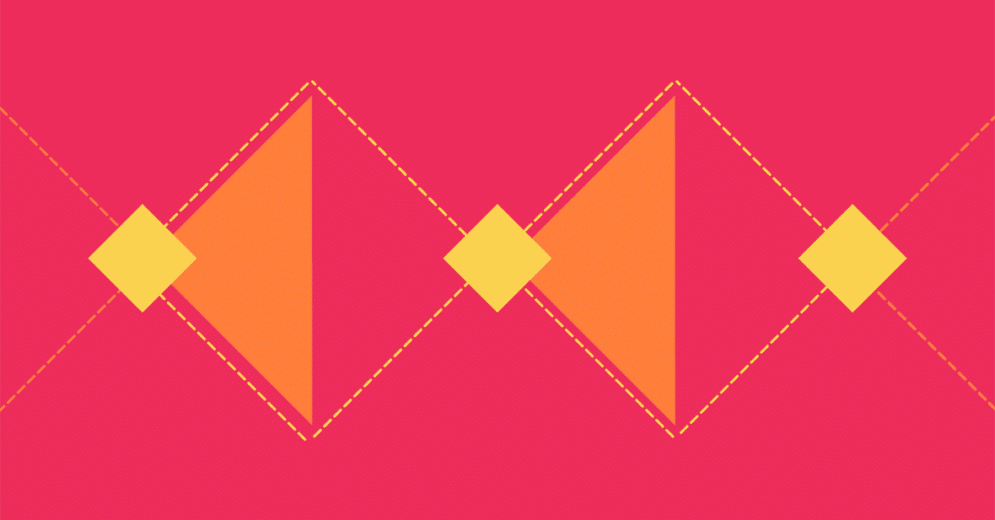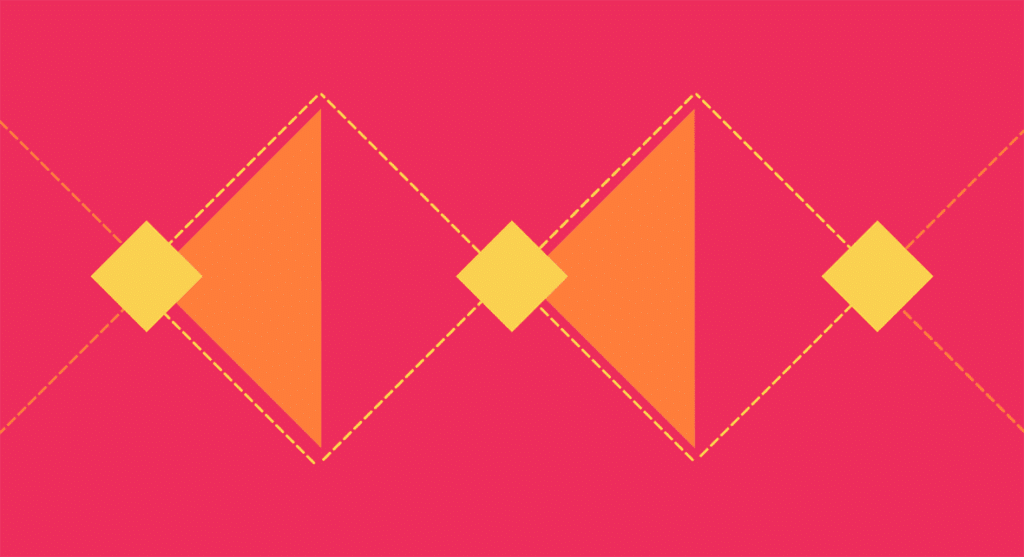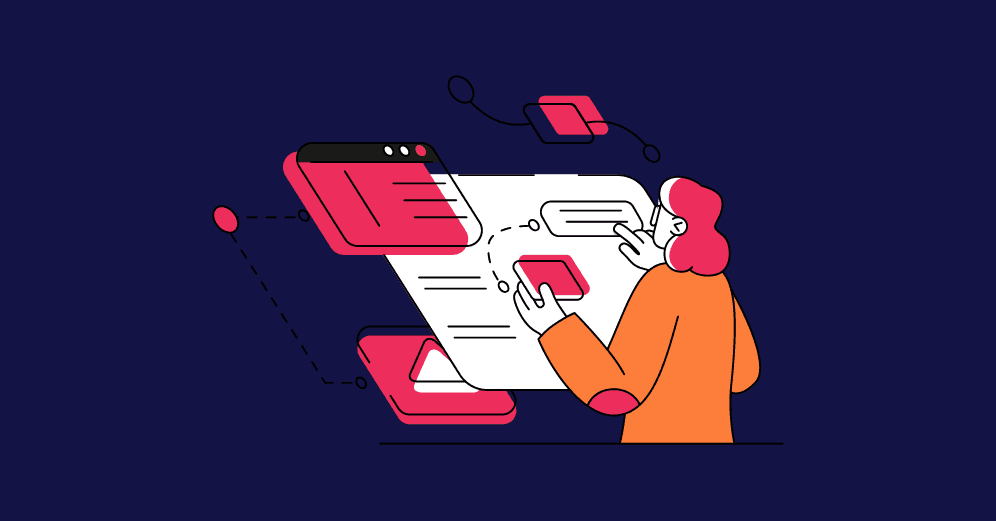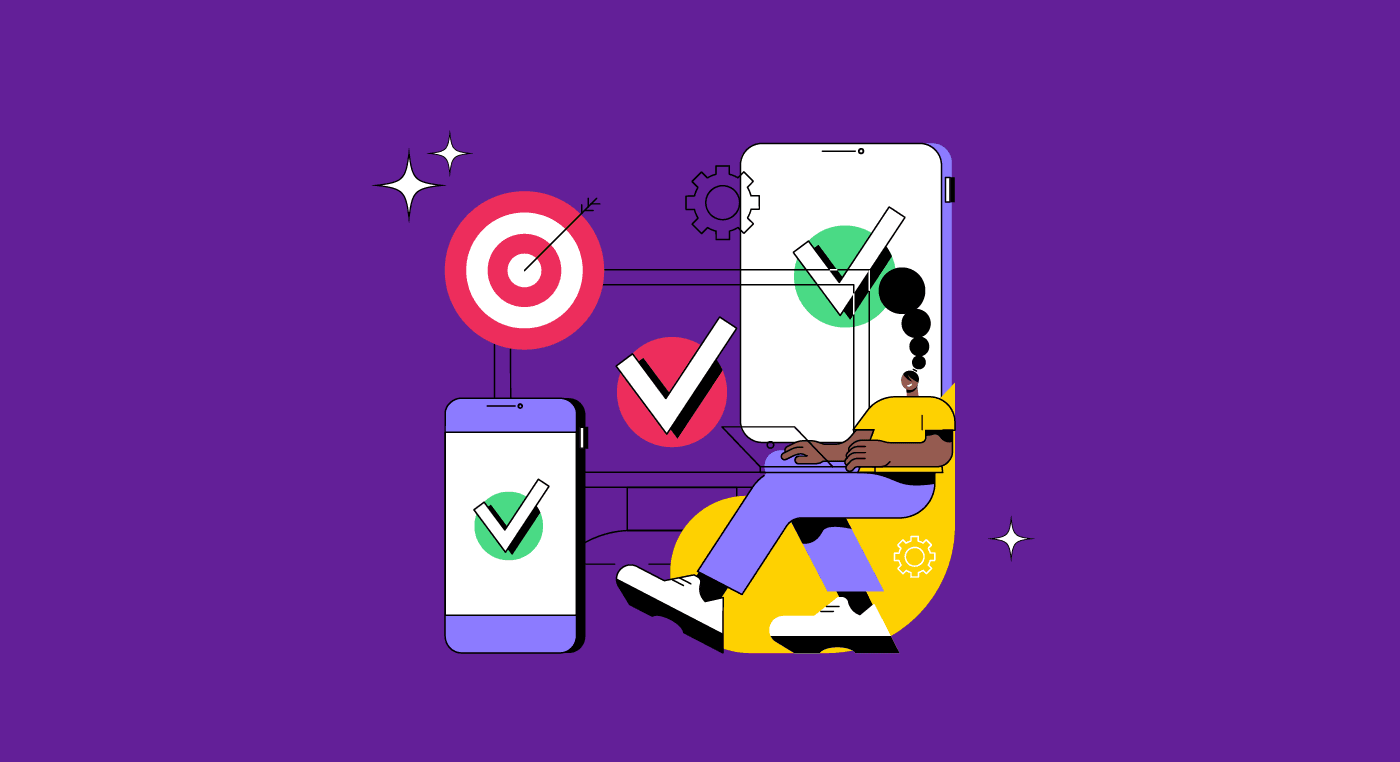For those who don't know, Double Diamond is a Design Thinking model to explore problems and develop innovative solutions. After all, Design is all about solving complex problems to enhance our life quality.
The Double Diamond was created in 2005 by the British Design Council, a UK non-profit institution that works to tackle world problems through Design solutions.
This article will explain all about Double Diamond and show you the best tools to use in each phase.
What is Double Diamond?
Double Diamond is a great way to help UX designers develop effective and creative solutions in four different steps:
- Discovery
- Definition
- Development
- Delivery
The Discovery and Definition phase refers to the first diamond, where the process revolves around extensive research to explore and define the problem.
While the last two phases — Develop and Deliver — focus on exploring a solution, building a prototype, and collecting user feedback.
Before starting

It's unlikely that your client or sponsor will show up with a well-defined problem statement. Or, they might even think they know what the problem is, but the real issues tend to appear after extensive research — and they usually prove different from those initially stated.
Thus, if a problem is presented beforehand, the team shouldn't get too attached to it. Still, it's essential to collect all the available information about the supposed problem to best orient the team and prepare for the project.
This preparation involves two steps:
- Develop the project's scope;
- Kick-off.
1) Develop the project's scope
The scope is basically a draft of the project plan. The objective is to map all the information the client exposed, with all the pains and needs they reported.
The scope contains:
- What they want to accomplish;
- The people involved in the project and their roles;
- Deadlines — if it's already known.
The scope serves to guide the project, but can — and probably will — be modified during its development.
2) Kick-off
A kick-off is the first get-together between your client and your team members. It's a crucial meeting to get to know the client's expectations, and it also serves to orient the team.
It's a great way to start any project and boost team morale, and it's where you should discuss the purpose of a project, common goals, and basically, plan for a smooth process throughout the project.
In summary, everyone should go through topics like:
- Project goals;
- Client expectations;
- How will you communicate;
- How often the team will check in with the client;
- Timeline expectations;
- What can you do to make sure there are no delays.
After these two steps, it's time to start the Double Diamond methodology.
Double Diamond: the design process

1° Discover
The starting point for the Discovery phase is the project's scope and everything presented in the kick-off.
During this step, the objective is to analyze the initial problem presented by the client and find out opportunities.
With this in mind, the team works on exploratory research to investigate the users and how they interact with the client's product.
Notice that several other problems will arise upon research, but nobody should worry about solving them at this stage. Here, the team only explores and investigates problems.
A few activities or tools your team can use at this point:
- Desk Research;
- Mind Maps;
- Multiple Perspective Framing;
- Field studies;
- Checking key business objectives;
- Reviewing data and insights about how problems affecting users impact work;
- Analyze any solution the company might have tried before.
As a result, your team will have a couple of possible deliverables:
- A deep understanding of the problem stated;
- A service blueprint;
- User-journey maps;
- User-needs statements;
- Personas.
2° Define

It's time to define which problem tackles the greatest user pain and will also bring the most benefits to the company.
During the Definition stage, the team will have to define priorities based on the improvement feasibility and availability of resources.
As a result, many hypotheses are discarded or put on hold since the team has to prioritize.
Tools that can come in handy during this phase:
- Root-cause analysis;
- Five why's;
- user story;
- affinity diagrams.
The first diamond
Notice that the first diamond focuses mainly on exploratory research about an initial problem.
Sometimes, the team may establish that the client doesn't need a technology-based solution.
3° Develop

With the problem defined, it's time to diverge again and explore ideas for improvement — similar to what happened in the first phase of the first diamond, only now it's all about solutions.
The team should now focus on developing prototypes to test the possible solutions. They can count on user personas to design prototypes according to the target users and their characteristics during the development process.
It's wise to count on a multidisciplinary team for rich insights, diverse perspectives, and specialists to help verify technical aspects of the solution's feasibility.
A few useful tools during this phase:
- Consumer Journey Mapping;
- Storytelling;
- Minimum Viable Product;
- Rapid prototyping.
4° Deliver

We have reached the last phase of the second diamond: prototyping the best solution and collecting user feedback.
Once a solution is chosen, it's time to build it together with the developers. Then, you can start with low-fidelity prototypes to validate the viability of that solution more quickly.
However, it's important to emphasize that this validation is not a usability test but a proof of concept. Here, the purpose is to recognize if the solution makes sense to the user.
Again, don't get too attached to an idea! After all, several prototypes can still be discarded during this stage.
Since iterative design always analyzes the solutions for continuous improvement, feedback is imperative.
Therefore, after the product or the improvement is delivered, the team should collect user feedback and experts evaluation.
Here are a few valuable tools to validate your product:
- Surveys: ratings or questionnaires to collect user feedback.
- Think Aloud: users interact with the product and describe the experience aloud while the team takes notes of important keywords, reactions, and body language.
- Shadowing: a testing tool where a team member follows the user (as a shadow) and takes notes while the user uses the product.
The second diamond
While the first diamond focuses on the current product and what the user is currently experiencing, the second diamond concentrates on new solutions, experiments, and validation tests.
A continuous improvement process
It's always important to strengthen the idea of continuous improvement, so see the process as an endless cycle of iteration and delivery.
Reading tip: Visual Hierarchy: How To Prioritize and Highlight Information
Double Diamond and Mercedes: a case study
Mercedes me is a Mercedes-Benz app for its luxury cars to offer the best-connected experience to its customers through a Smartphone or Apple Watch. Daimler developed this Mercedes app in partnership with Pivotal Labs (now VMware Tanzu Labs).
The team developed an MVP in 6 months using the Double Diamond process. It was considered the fastest delivery of a Mercedes application.
Among the main functions of the app were:
- Provide remote online services such as live traffic information and remote parking, where the driver can control the car by the app;
- Assist in locating original parts, roadside assistance, and warranties;
- Help with car, leasing, and insurance payment plans;
- Shared driving by Car2go, where users can find and reserve cars.

According to Manuel Birke, engineering manager of the Mercedes-Benz Research & Development team, the Mercedes me development process was divided into two parts — corresponding to the two diamonds of the Double Diamond:
- Discovery and framing phase (first diamond): where they developed hypotheses;
- “Interactive approach” phase (second diamond): the team created possible use cases and gathered user feedback.
Along with Mercedes's app MVP also came a few lessons:
- Communication needs to flow well between everyone involved in the project. Everyone must have the mentality of "losing and winning" together;
- Regular meetings and alignment of medium and long term views;
- Make sure you're able to work on your tasks regardless of others, so you don't have to rely on development cycles;
- The development plan needs to be easily adaptable to different situations. For this, it's necessary to consider the worst-case scenarios, foreseeing possible risks or adverse conditions during the project.
- Pairing programming, when developers of different levels work together;
- Bug fixes should be seen as an opportunity for improvement.
The great takeaway
Double Diamond is a human-centric approach to defining complex problems through research and generating innovative solutions through multiple cycles of prototyping.
It’s not a method exclusive to designers because it can be applied to any product or company that calls for a change.
Remember that a design process shouldn't be linear. In fact, you should go back and forth between these stages in order to fully understand what the problem is and create the best solution.
So don't be strict about following each of the steps in the described order, use them as you see fit. What matters most is understanding the importance of exploration, team collaboration, and how you can make the best of these practices with the amazing tools mentioned above.








